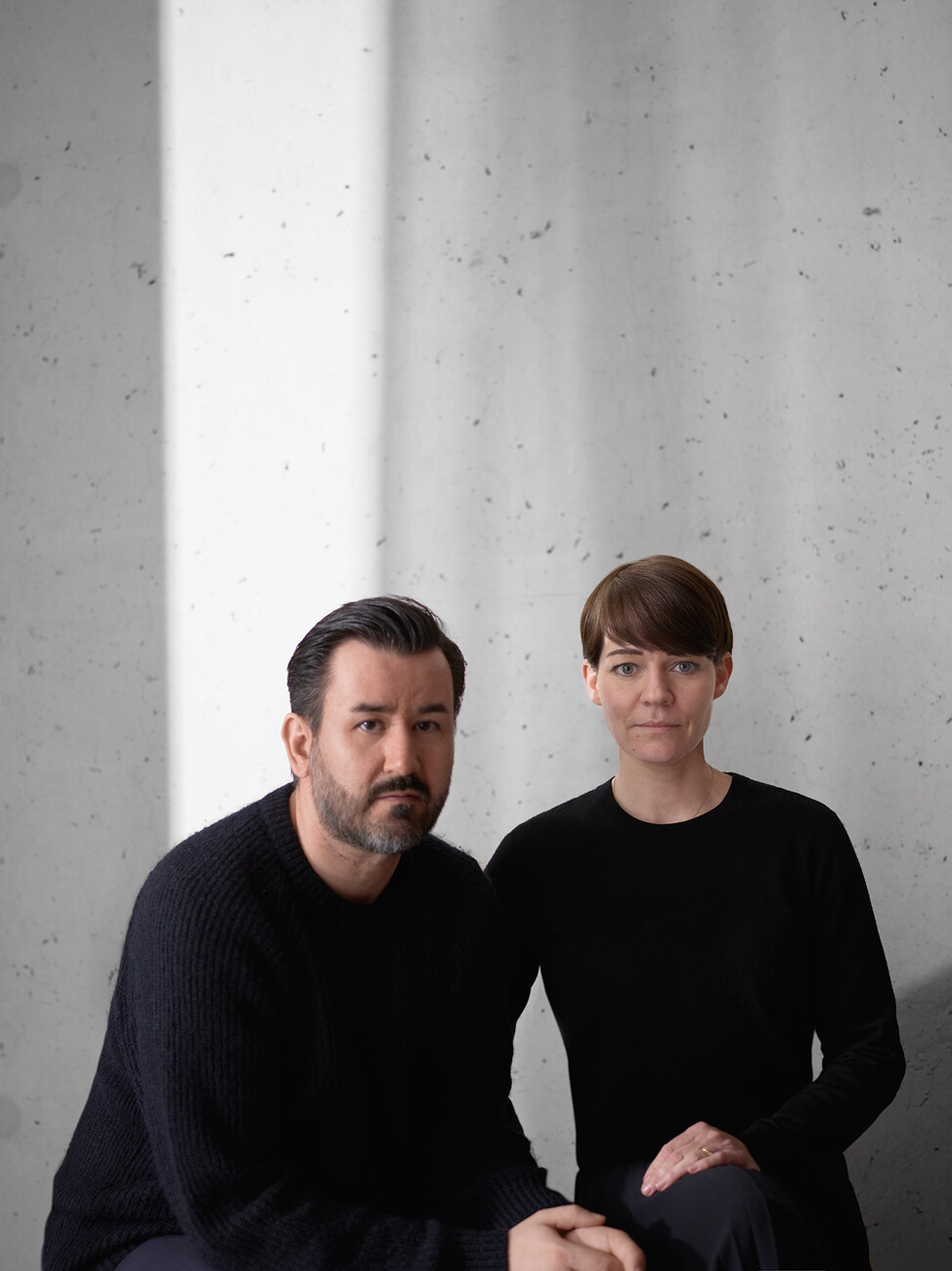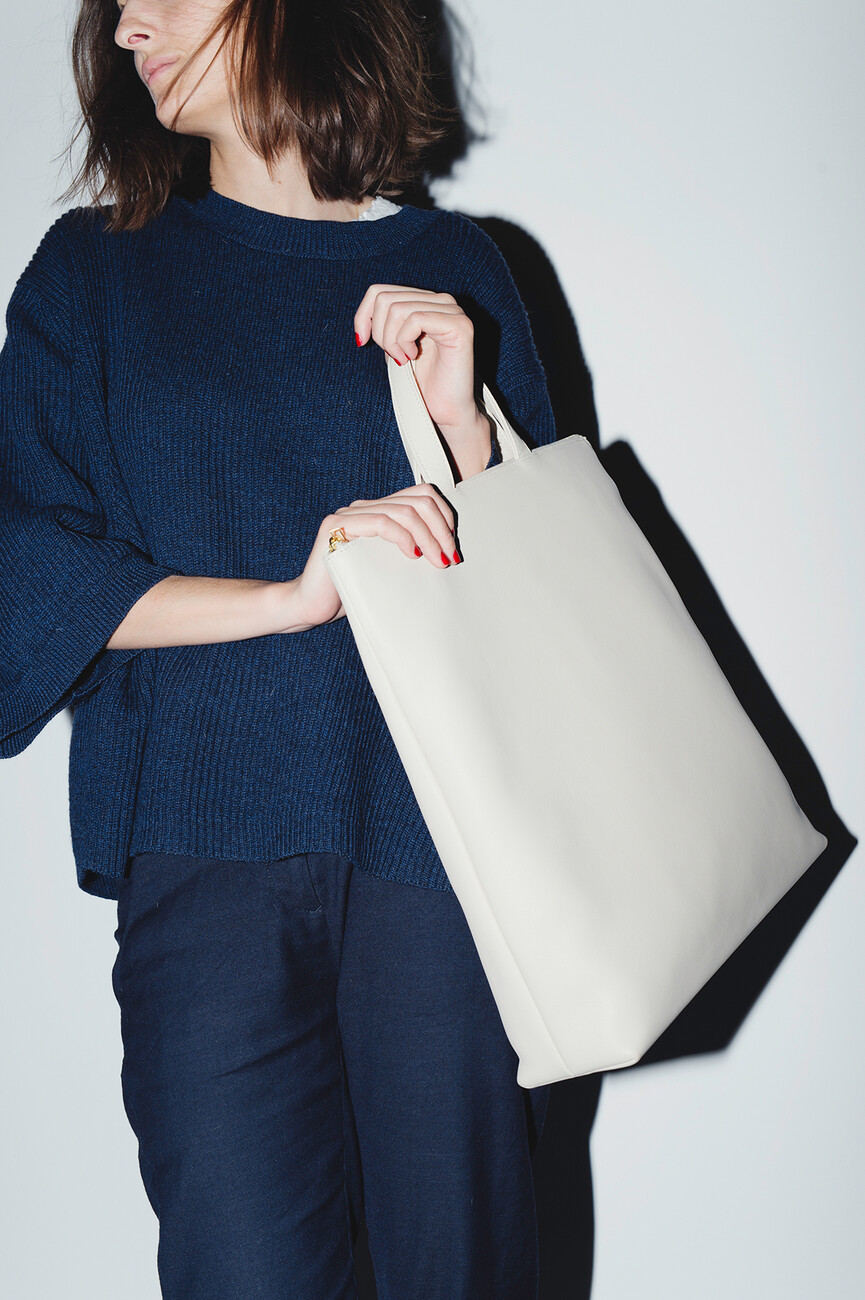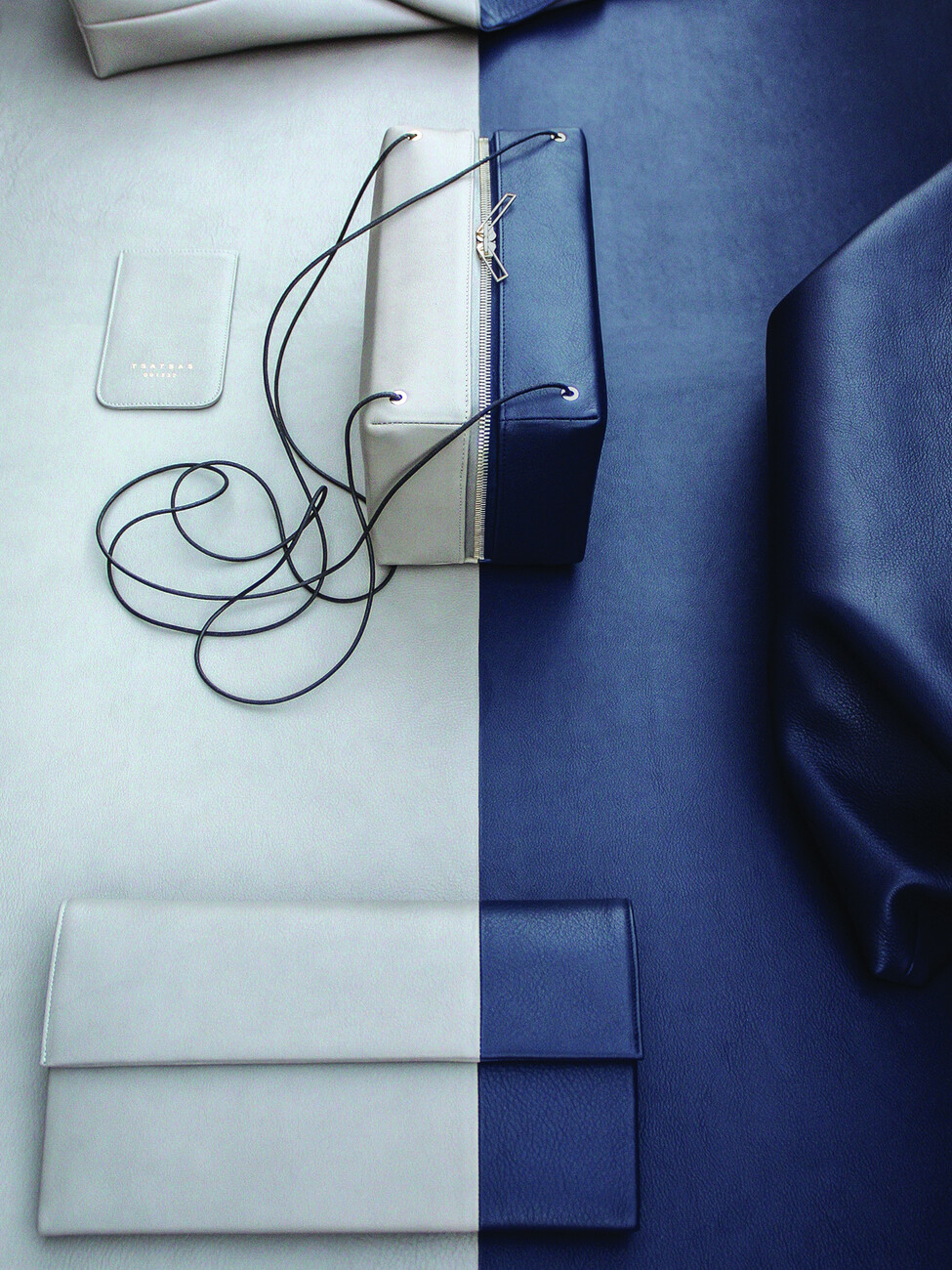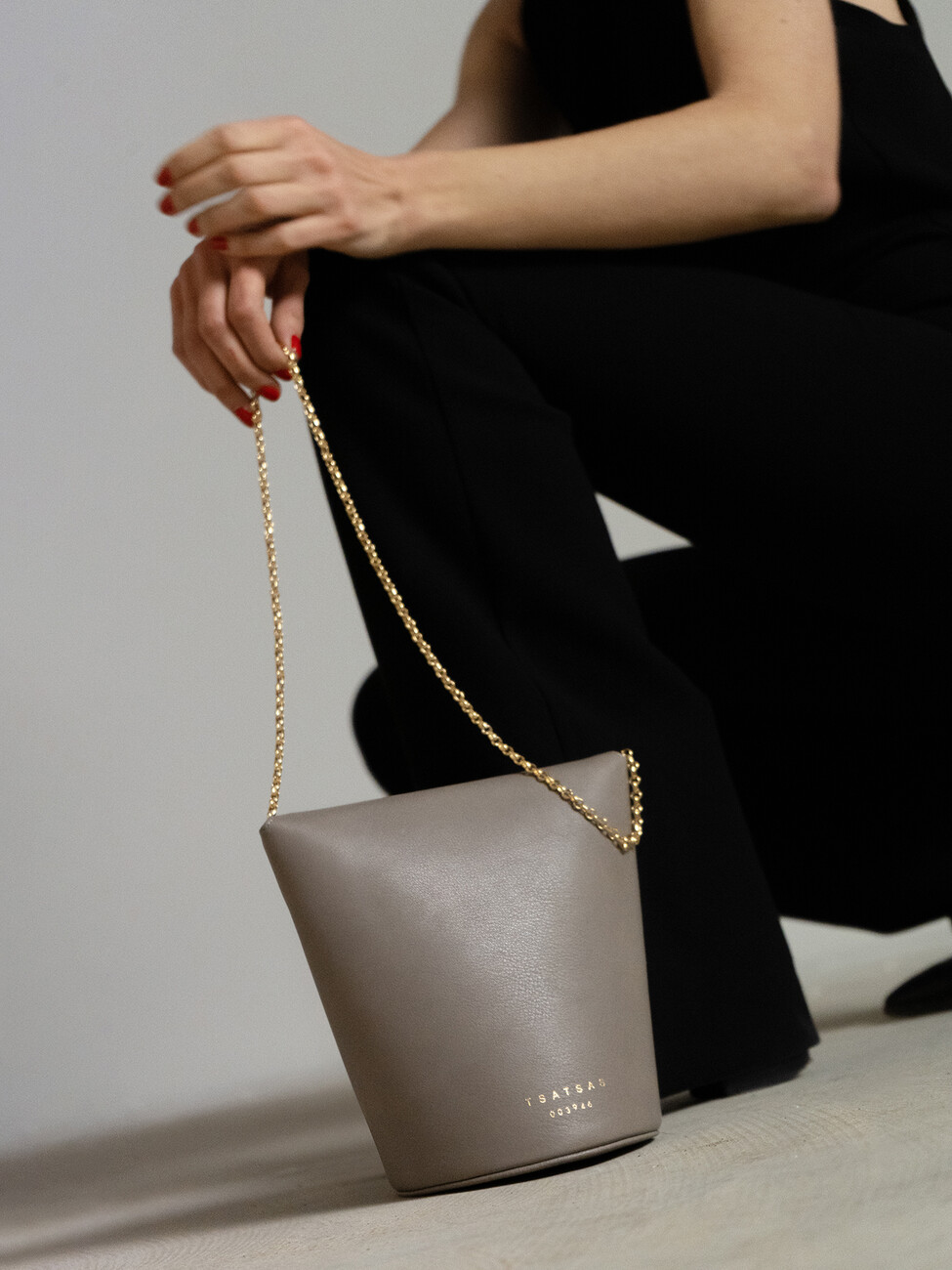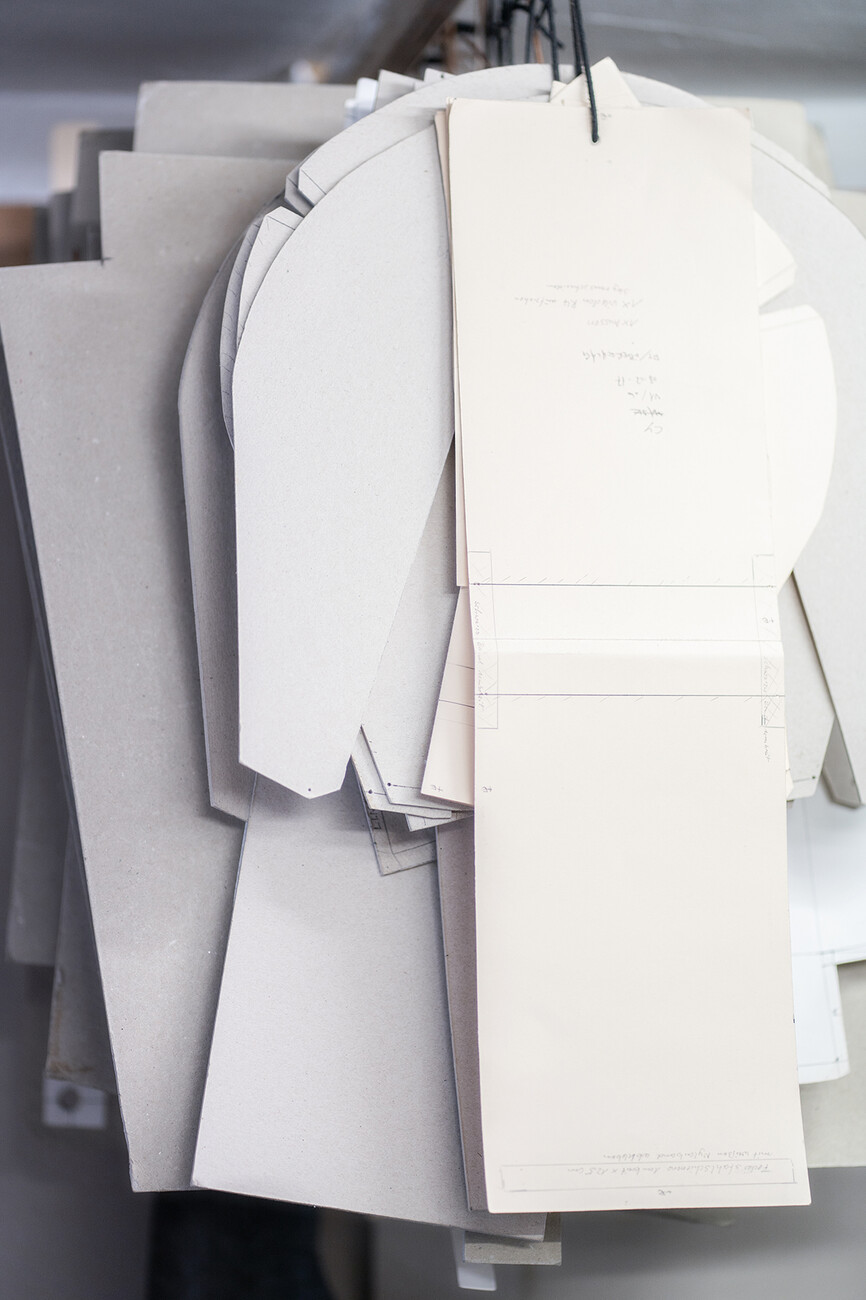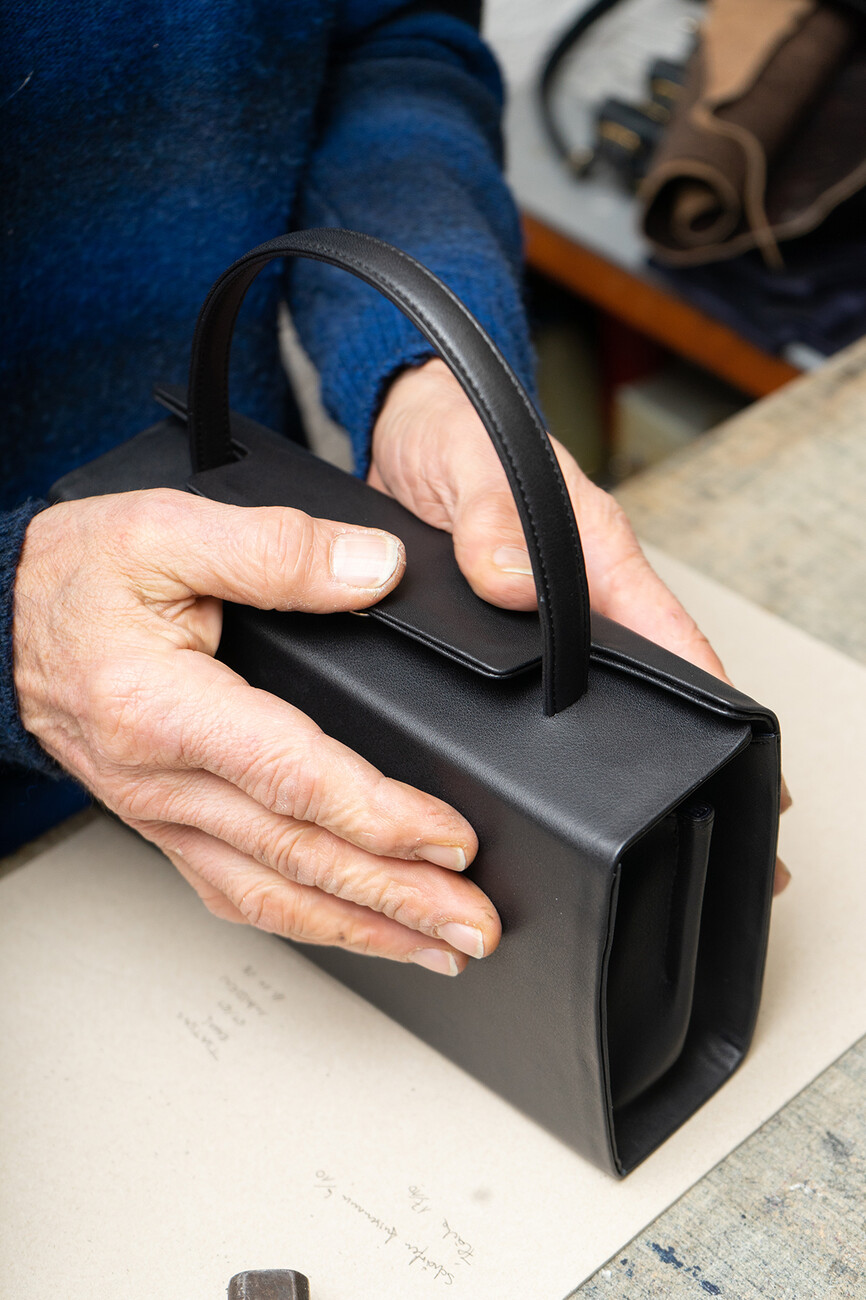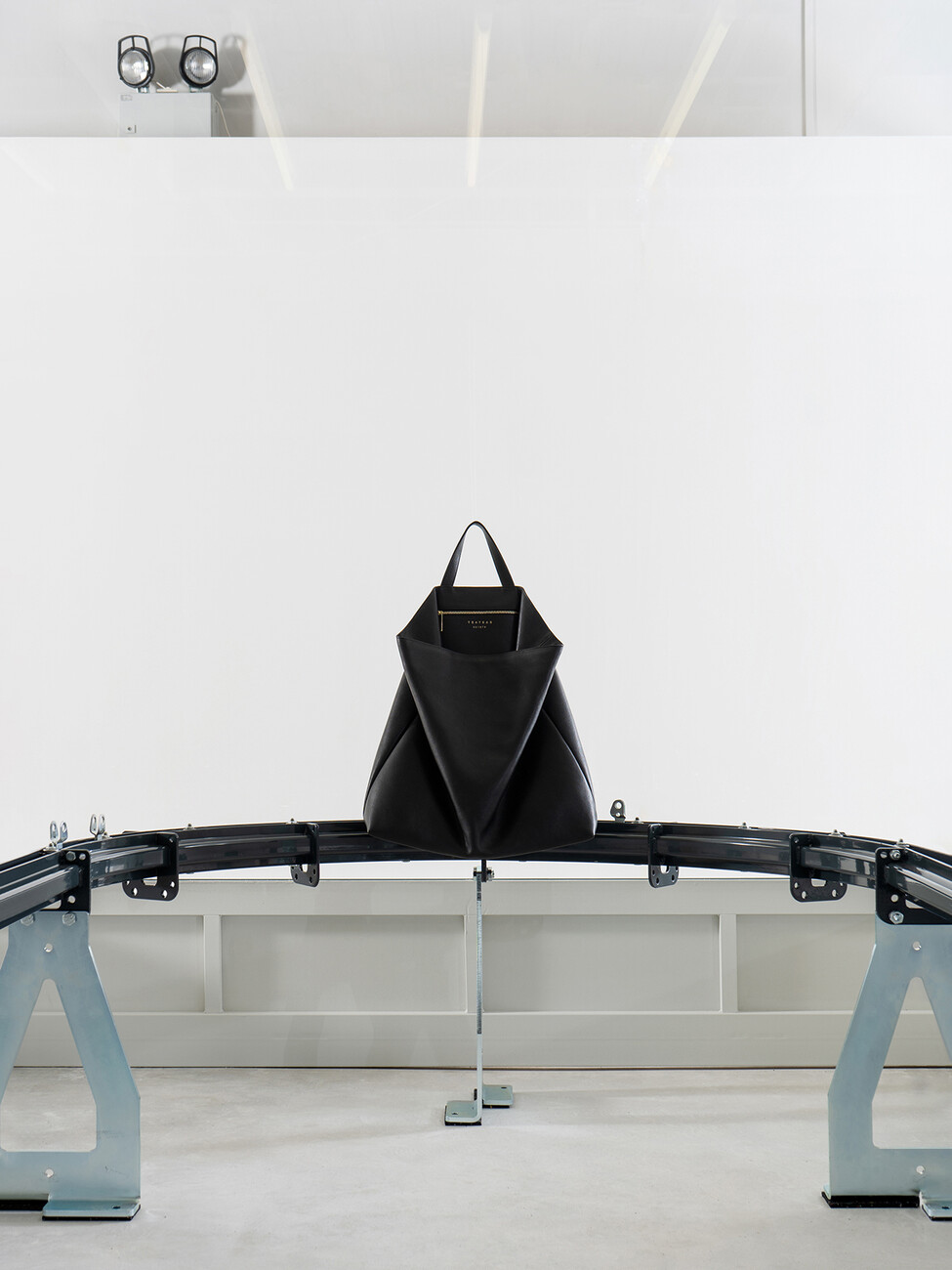Without ornamentation
Anna Moldenhauer: What was the occasion for the exhibition "TSATSAS. past present future" at the Deutsches Ledermuseum in Offenbach?
Dimitrios Tsatsas: This year we are celebrating the tenth anniversary of our bag label. Individual products have been part of the exhibitions of the Leather Museum from time to time - the director Dr. Inez Florschütz has now suggested that we present the development of the company in a solo exhibition.
What was important to you in the presentation of the exhibits?
Dimitrios Tsatsas: As the exhibition space is currently being modernised under the direction of Dr Florschütz, the room has been de-cored, which affects both the existing display cases and the floor. The concrete has been exposed and sanded down. We have taken up this raw effect and completely immersed the exhibition space in a light grey. With regard to the exhibits, the exhibition is not a classic retrospective; it would be too early to look back on our work in this form. It is therefore not divided chronologically, but into thematic fields. The concept thus provides insights into which factors are relevant to our work and how the bags are created. We will also show a film that illustrates how complex these craft processes are. The design process is far from being as linear as one might think - there are many steps between the two-dimensional design and the three-dimensional product. At one station, we also offer visitors the opportunity to touch the material to get a feel for the quality. We also shed light on our collaborations. Another important aspect is sustainability, which was very important to us from the beginning.
You have also set up a conveyor belt in the centre of the room on which a selection of the bags is presented. What was the idea behind this?
Dimitrios Tsatsas: The core element is an industrial circular conveyor, but its design is relatively atypical. It is not suspended from the ceiling, but runs about 40 centimetres above the floor. On it we have placed the bags of the collection that are most relevant to us, which are thus equal in position. Due to the endless movement of the conveyor belt, they constantly change their position, which creates a uniform overall look.
Tsatsas is based on your father's leather craft atelier in Offenbach. How has handmade production changed over the last few years with the growing demand?
Dimitrios Tsatsas: We have expanded in terms of space and staff, but the location is still in Offenbach am Main. We want to continue this in the future. The growth of our company should be healthy and controllable, because close cooperation between creation and production is essential. Only in this way can we ensure that every item bears our signature down to the last detail and that quality is always guaranteed. In addition, interdisciplinary teamwork prevents one of the two areas from becoming operationally blind.
What kind of leather do you use for the production?
Dimitrios Tsatsas: That depends on the product characteristics you want to achieve - from smooth to grained. We work with purely natural, open-pored leather and hardly interfere with the structure or surface. More than 90 percent of the leather on the market is "refined", i.e. the natural grain pattern is covered with a layer of pigment. For the natural tanning method we use, only skins of the best quality are considered, which show neither scratches nor scars. Naturally left leather is very pleasant to the touch and also ages more aesthetically. Layers applied over the natural material can form creases or cracks over time. This is not the case with our bags - the material virtually ages gracefully.
Your colour palette was neutral for a long time, now you have expanded the spectrum. Was there a reason for this?
Dimitrios Tsatsas: The different poles in the design are now strong enough to offer more choice in colour as well. We always try to see the collection as a whole. That's why we don't introduce a colour for a season - if we decide on a colour, we also offer it for the old models.
How do you set the respective shades?
Dimitrios Tsatsas: We don't follow trends, so our selection is very personal. None of our colours is "classic" in its sense, each one deviates a little from its basic tone. The red, for example, has a slight orange tinge and looks different depending on the incidence of light.
Your designs are very clear. Why does bag design not need ornaments?
Dimitrios Tsatsas: That's a good question. Basically, ornamentation is based on trends - and trends have a visual expiry date. If you want to design products that are as timeless as possible, flourishes make little sense. Moreover, a bag enters into a certain symbiosis with the person carrying it. If the design of the object is restrained, people don't get tired of it. Our first designs, like "Fluke" or "Lucid" are still in demand ten years later. Moreover, all the bags work together as a collection. That wouldn't be possible if we had overstimulated each design.
What are you working on now?
Dimitrios Tsatsas: We are currently working on different projects - in the show at the Leather Museum we are presenting the extension of "Suit-Case" for the first time, which was created together with the architect David Chipperfield. In addition to the existing suitcase, there will be a briefcase and other travel accessories. All elements are designed in a formal language - quasi the shape of the suitcase as a starting point, which becomes smaller and more abstract with each addition.
TSATSAS
past, present, future
1 April to 30 October 2022
Frankfurter Str. 86
63067 Offenbach
Tel.: 0040 69 829 7980
Tuesday to Friday: 10 am - 5 pm
Weekends and public holidays: 11 a.m. - 6 p.m.
Second Thursday of the month: 10 a.m. - 8 p.m.

